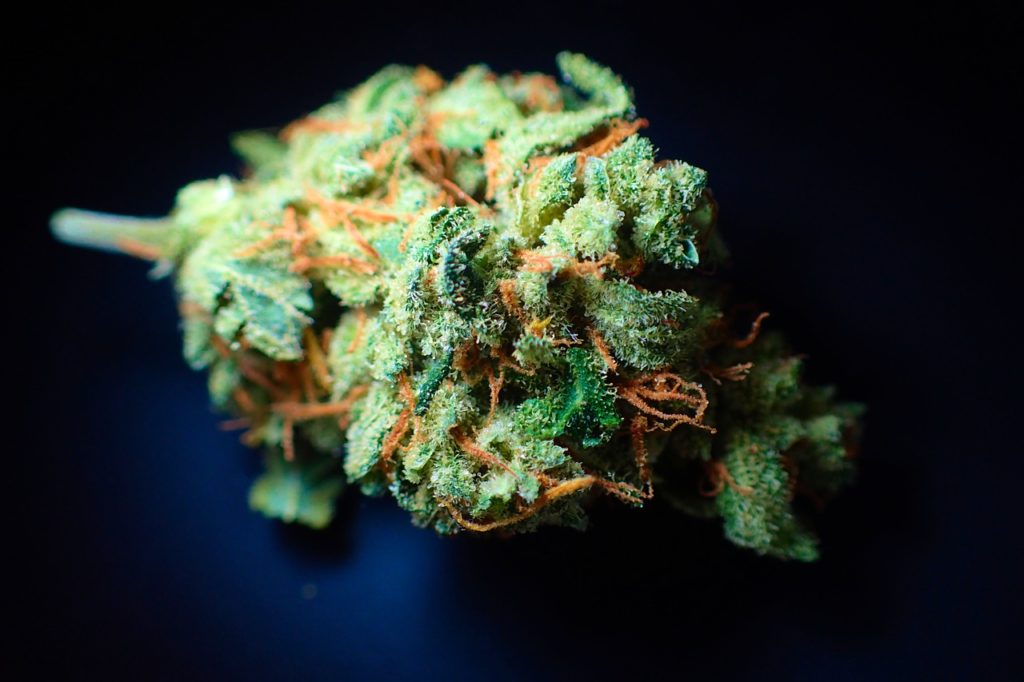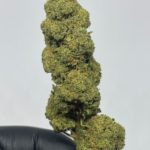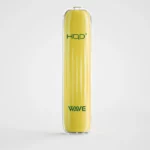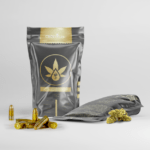Cannabidivarin, better known as CBDV, is one of the compounds that has only recently been researched. It was first identified in 1969. In 1971, Frans and Merkus wrote about CBDV and tetrahydrocannabivarin (THCV) and said they were “the other two components of hashish”. Only recently has CBDV become the subject of detailed research, more than 40 years after its initial identification;
What is CBDV?
Cannabidivarin is a non-intoxicating compound with a similar structure to CBD. Both have 30 stereoisomers and seven double-bond isomers. In general, CBDV is found in plants with high CBD and low THC. It’s not easy to find cannabinoid in any significant amount. Marijuana is the only known plant that produces it, and you won’t find much CBDV in commercial strains;

Products that may be of interest to you
If you’re looking for a strain with a high CBDV content, it’s best to focus on indica landrace strains from Africa and Asia. Landrace strains are genetically pure, meaning they have not been affected by experimentation. Indicas such as Medical Mass and Euphoria can contain relatively high amounts of CBDV;
When it comes to extracting CBDV from cannabis, remember that cannabis strains can have a CBD to THC ratio of up to 100:1. As a result, CBDV may be lurking in the background. As you can probably guess, researchers are trying to discover the medicinal benefits of CBDV. They have conducted several studies over the past decade.
You won’t feel the psychoactive influence from CBDV here. Instead, you can expect it to have a similar effect on you as CBD. The lack of psychoactive effects means that we can use CBDV to treat children with conditions such as epilepsy and associated seizures;
Other potential conditions it could treat include nausea, Duchenne muscular dystrophy and gastrointestinal diseases such as Crohn’s disease and inflammatory bowel disease;
Possible medical effects of CBDV – studies
One of the main differences between CBD and CBDV is that CBDV is truncated by two methyl (CH2) groups in its side chain. Both marijuana compounds have demonstrated potential anticonvulsant activity in human and animal studies.
Compounds such as THC modulate most of their physiological effects through binding with CB1 and CB2 receptors. However, cannabinoids such as CBDV, which have anticonvulsant effects, use mechanisms that do not involve either receptor;
The antiepileptic activity of CBDV is potentially modulated by the effects of the cannabinoid on the capsaicin receptor, TRPV1. Together with CBD, CBDV has demonstrated the ability to activate and desensitize TRPA1, TRPV1 and TRPV2 channels in a dose-dependent manner. By desensitizing these ion channels, these molecules cause a reduction in neuronal hyperexcitability. This helps to reduce epileptic activity and associated seizures;
CBDV could inhibit the activity of DAG (diacylglycerol). DAG is the primary enzyme that causes the synthesis of the endocannabinoid 2-AG. However, this particular interaction does not appear to affect the anticonvulsant activity of the cannabinoid.

Pharmaceutical giant joins CBDV
CBDV has received a considerable amount of attention recently. A major pharmaceutical giant, GW Pharmaceuticals, announced that it had begun developing it as an experimental compound called ‘GWP42006.’ GW hoped to treat seizures in epilepsy and submitted its product for clinical trials. In early 2018, GW announced that a placebo-controlled Phase 2a study targeting focal seizure did not meet its primary endpoints.
However, the company said it will continue to study the use of the cannabinoid in epilepsy. It has also expanded its investigations to include its possible use in FXS syndrome, Rett syndrome, autism spectrum disorder and other conditions. Interestingly, in October 2017, the European Medicines Agency granted CBDV “orphan designation” for use in Rett syndrome. It did so again in February 2018 for the treatment of FXS syndrome.
In case you’re wondering, the term “orphan” is for drugs that are potentially effective in treating rare diseases. A drug can only receive this status in Europe if it treats a condition that affects no more than 1 in 2,000 people.In 2020, the FDA followed the European Medicines Agency’s lead and granted CBDV orphan designation for FXS syndrome and Rett syndrome. Now Sanobiotec lags behind cannabinoid for ASD benefits. It is involved in a Phase II intervention study in children with PAS.
The study by Hill et al. (link to study) published in the British Journal of Pharmacology in December 2012 looked at CBDV as a possible anticonvulsant in rats and mice. The researchers reported that CBDV is an effective anticonvulsant in a wide range of seizure models. Significantly, the cannabinoid also did not affect normal motor function. The team concluded that CBDV requires further investigation as a “novel antiepileptic drug.”
Autism spectrum disorder (ASD) and intractable childhood epilepsy are closely related. The study by Holland of Albert Einstein College of Medicine in New York (link to study) examines the effects of CBDV in treating ASD problems. These include problems with social functioning and communication and recurrent behavioural problems;
In 2013, Amada et al. found that CBDV significantly reduced “PTZ-induced seizure activity and increased latency to first seizure symptom.”
The study by Iannotti et al. (link to study), published in ACS Chemical Neuroscience in November 2014, looked at the effects of CBD and CBDV on rats with induced epilepsy symptoms. The team found that both cannabinoids interacted with TRPV1. This channel is responsible for detecting and regulating body temperature and triggering pain sensations;
A recent study (link to study) published in Frontiers in Cell Neuroscience in 2019 has given hope to individuals with ASD. Researchers have found that CBDV treatment could improve autism-like behaviors. However, again, the test subjects in this case were mice.
CBDV for Duchenne muscular dystrophy (DMD) and Rett syndrome
Symptoms of DMD include irreversible skeletal muscle damage and chronic inflammation. The study by Iannotti et al. (link to study), published in the British Journal of Pharmacology in May 2019, is relevant. He investigated the effect of non-euphoric cannabinoids from marijuana on muscle quality and performance in dystrophic mice.
The team found that CBDV can not only reduce inflammation but also improve muscle function. Because the compound also improved movement, the researchers suggested that the cannabinoid was potentially a new therapy for DMD.
The study by Zamberletti et al. (link to study), published in the Journal of Psychopharmacology in July 2019, also offered interesting results. CBDV was found to help rescue memory defects in mice carrying the same genetic defect as people with Rett syndrome. While the compound also helped with neurological effects, they were transient effects.
Speaking of inflammation, the study by Petrocellis et al. (link to study), published in Acta Physiologica in February 2012, had fascinating results. It has been found that CBDV can dramatically reduce the gastrointestinal inflammation that accompanies diseases such as inflammatory bowel disease, Crohn’s disease and irritable bowel syndrome;
CBDV as a remedy for nausea
The study by Rock et al. (link to study), published in the British Journal of Pharmacology in October 2013, looked at the effect of CBDV on rats with nausea. The researchers found that CBDV likely acts as an agonist at CB1 receptors and blocks the nausea response. However, despite the positive results, the study also concluded that more research is needed to determine the effectiveness of CBDV.
Conclusion
Preliminary research on CBDV reveals that this cannabinoid could have a number of therapeutic effects. Remember, scientists first discovered CBDV in 1969. However, there are few studies on its effectiveness in treating symptoms of conditions like epilepsy before 2012. Further research will hopefully show us that CBDV is a potentially useful form of alternative treatment. If this happens, we expect growers to focus on developing strains with high CBDV content, as has been the case with CBD. Currently, few strains contain reasonable levels of CBDV. This can be expected to change soon;




















